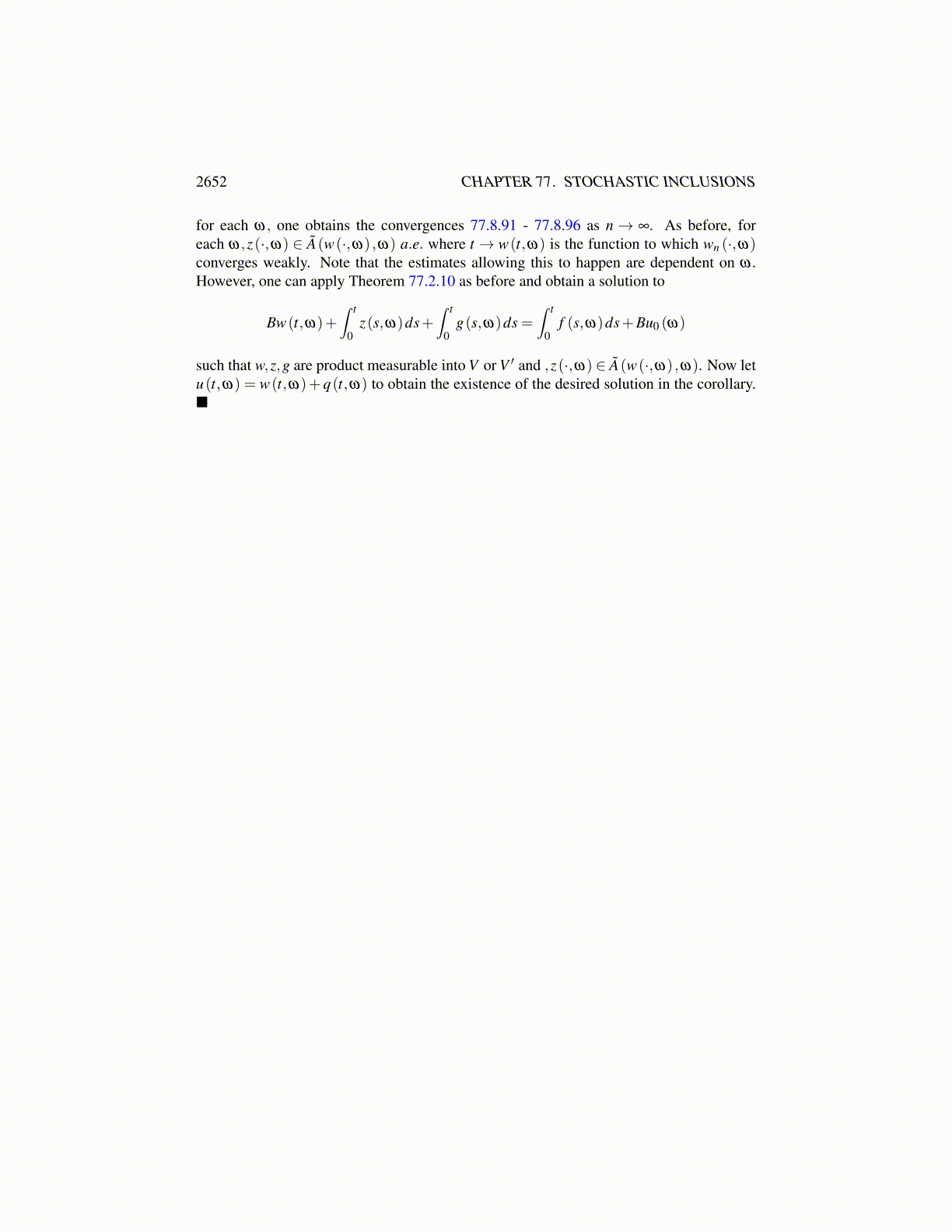
2652 CHAPTER 77. STOCHASTIC INCLUSIONS
where limµ,ν→0 ε (µ,ν) = 0. It follows from 77.8.97
lim supµ,ν→0
(∫ T
0
⟨zµ − zν ,uµ −uν
⟩ds+ ε (µ,ν)
)= lim sup
µ,ν→0
(∫ T
0
⟨zµ − zν ,uµ −uν
⟩ds)≤ 0
From Lemma 77.8.4,lim sup
µ→0
⟨zµ ,uµ −u
⟩V ′,V ≤ 0
By the limit condition for A(·,ω) , for each v ∈ V , there exists z(v) ∈ Au such that
lim infµ→0
⟨zµ ,uµ − v
⟩= lim inf
µ→0
(⟨zµ ,uµ −u
⟩+⟨zµ ,u− v
⟩)= ⟨z,u− v⟩ ≥ ⟨z(v) ,u− v⟩
Since A(u,ω) is convex and closed, separation theorems imply that z ∈ Au. Return to theequation solved. (
Buµ
)′+ zµ +gµ = f
Then act on uµ −u and use monotonicity arguments to write⟨(Bu)′ ,uµ −u
⟩V ′,V +
⟨zµ ,uµ −u
⟩V ′,V +
⟨gµ ,uµ −u
⟩V ′,V ≤
⟨f ,uµ −u
⟩V ′,V (77.8.98)
Then it was shown above that
0≥ lim supµ→0
⟨zµ ,uµ −u
⟩V ′,V ≥ lim inf
µ→0
⟨zµ ,uµ −u
⟩V ′,V ≥ ⟨z(u) ,u−u⟩V ′,V = 0
and so, from 77.8.98,
limµ→0
⟨gµ ,uµ −u
⟩V ′,V = lim
µ→0
⟨gµ ,Jµ uµ −u
⟩V ′,V = 0
and solimµ→0
⟨gµ ,Jµ uµ
⟩V ′,V = ⟨g,u⟩V ′,V
Now let [a,b] ∈ G (G) . Then
⟨b−g,a−u⟩= limµ→0
⟨b−gµ ,a− Jµ uµ
⟩≥ 0
because gµ ∈ G(Jµ uµ
). Since G is maximal monotone, it follows that [u,g] ∈ G (G).
This has shown that for each ω fixed, and every sequence of solutions to the integralequation
{uµ
}, each function
{Buµ
}being product measurable by Theorem 77.5.7, there
exists a subsequence which converges to a solution u to the integral equation. In particular,t → Bu(t) is weakly continuous into V ′. Then by the fundamental measurable selectiontheorem, Theorem 77.2.10, there exists a product measurable function ū(t,ω) with valuesin V weakly continuous in t and a sequence depending on ω,
{uµ(ω)
}such that for each